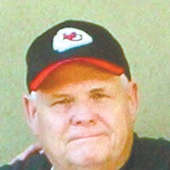Cookies and pole beans
One of the least popular classes at every scholastic level is history. When I taught more that one history subject many years ago, students would often complain as to just why they needed to study these boring ‘oldies.’ My usual answer was to tell them that they would have a hard time baking cookies or finding some pole bean seed, if not for history.
They would generally gaze back in a puzzled manner, as just what these two very unrelated topics had to do with history. I would begin with asking them some simple questions.
My first question was, “what is your favorite cookie?” More often than not, the general reply from most classmates was chocolate chip. Next, I would ask them who could write down the complete recipe for making chocolate chip cookies? Once again most of their faces would assume a bit of a confused stare. Their final solution was that to bake the cookies, they would need to find the answer in a recipe book.
At this point I would emphasize to them, that a recipe is nothing more than simple history. At some point in the past, someone had experimented with different ingredients and baking techniques, and the end result was a delicious chocolate chip cookie.
Unfortunately, if that person had not kept track of the entire process, including completing some sort of record (written recipe), the successful method of making this cookie would be lost. Only by making a historical recipe could this system of baking be passed down to succeeding generations.
I would then tell them of my grandmother’s famous Castleberry Pole Beans. When I was growing up, my grandmother raised this type of green pole bean which had been handed down from generation to generation as a family heirloom seed. Her story regarding this bean was that the seed had been in the Kinkead family for generations.
The Kinkead family had migrated from the British Isles at some point early in our country’s history to Virginia. Later they homesteaded in Kentucky before eventually settling in the Warsaw, Missouri, Valley. Throughout all these moves, they kept the seed alive by saving some from each growing season. In the time of my childhood, grandmother was able to continue to preserve her own seed each season.
The bean itself was quite large. It grew on poles in her garden. The bean was long and wide, and it contained larger than normal brown bean seeds within. It was also of a variety that needed to be stringed before canning or eating. If you wanted to see a similar type of bean in the grocery store of today, it would be one of the Italian variety of canned beans.
Grandmother Hart was a legendary cook. She took pride in providing enough food for a large group of people, regardless of the number who were actually in attendance at her table. A regular addition to her table was this large dutch oven style pan she filled with Castleberry beans. Large chunks of either ham, bacon, or ham hocks, along with onions, and potatoes, were also regular additions. The rich broth from this mixture was remarkable.
Each season as the garden faded, she would carefully collect some of those brown bean seeds from these pole beans and put them in a dark cool place in her basement. The next summer they would be ready to replant and the process would be carried forward.
I am not sure when she lost the continuation of the seed, but once it was gone there was no way to replace it. I have looked online in vain to see if there are any heirloom seeds bearing this name without success. The family history connection with our favorite Castleberry bean was lost, likely to never be seen again.
In relating this bean story, I would always tell my students how important it was for them to ‘stay in touch’ with their own family’s history. It is not just the history we study in school that is of value to us. Knowing where you came from, and what your family has done is always important.
Nothing bears this out to me more than when I am writing these columns. That Grandmother, Helen Kinkead Hart, was a treasure trove of information and history.
She could easily relate the names and relationships of both her large extended family and my Grandfather Hart’s. When it came to recipes, she often was able to bake or cook wonderful food items without the need of her recipe books.
When I am writing columns, I do my due diligence to ensure that what I put in these stories is complete and correct. Despite these efforts, some family member or family friend will on occasion inform me of some historical error.
There are few days that pass that I don’t have some thought regarding information, that only my Grandmother or my Mother could have most assuredly given me the correct answer. I was, for the most part, an apt student of our family background and history, but what I have lost would fill volumes.
Grandmother was famous for another type of history. During every vacation or family outing, she wrote down everything in a small spiral notebook. It would include the names of everyone present, where they went, what they ate, the road and weather conditions, and so forth. Months or even years later, she would pull out one of these notebooks and entertain us with the memories of that excursion.
If you have relatives or friends that you cherish, take a few moments to reminisce with them about the past. Some of the seemingly unimportant memories will at some later time become treasures.
Like the best chocolate chip cookies or some heirloom seed, history and memories are fragile. They can and will be lost without very intense desires and efforts to save them.

